Our Mission
Our Mission
Decibel is a community-led journalism project. We amplify diverse voices in Central Texas through in-depth listening and storytelling. Our storytelling seeks to highlight the complex conversations happening in local communities.
Core Values
- Representation - We vow to cover underrepresented communities and to allow those communities to have a say in how we represent them. We want to move beyond diversity. It’s not enough to feature diverse voices in our coverage. We strive to view and portray people from many angles and to not reduce them into a one-dimensional version of themselves.
- Authenticity - We vow to create a space for people to be their authentic selves. Our measure of authenticity will not be what we deem is authentic, but instead what members of a community deem is authentic. We will strive to create content that is not exploitative and instead gives members of a community the opportunity to see their true selves.
- Fairness - We vow to ensure fairness to all communities. To determine what is fair, we will use the Platinum Rule as our guide. We will strive to treat people the way they would like to be treated.
- Transparency - We vow to be transparent about all that we do. We will strive to constantly explain our process. It’s not enough to tell stories. We need to explain how stories are made, what decisions we make and why we make them.
- Accountability - We vow to allow the communities we cover to hold us accountable to our core values. We promise to host community events and build practices so the public can always give us feedback. More importantly, we promise to listen to that feedback and put it into action.
- Investment - We vow to invest the time and thoughtfulness needed to tell complex stories. We promise to invest our time and resources into listening and building relationships and trust with the communities we cover.
How It Works
- Step 1: Choose a community: We identify a community that has either been underserved by the news media, or that has traditionally been reported on in a one-dimensional way. We commit to reporting in that community for a full year.
- Step 2: Visit and listen: We go out to that community and listen to them. We talk to them about the issues that are affecting them, but we also make the effort to not reduce a community to the problems they face. So we also talk to them about who in the community is doing interesting work, and what are the things they love about their community?
- Step 3: Research and development: We gather all of the insight and feedback we get from the community. We do research and then we use this information to decide what stories to work on. No story is assigned without community input.
- Step 4: Create content: Based on the feedback we get, we create content. For us, that is multimedia stories.
- Step 5: Keep the conversation going: We host community listening events to showcase our work and once again hear from members of the community. We know we can’t cover everything in our work, so the goal of this events is to ensure we continue to listen to the community and give them a place to share their thoughts on our work.
This model has been adapted from The Listening Post Collective Playbook.
What Community Journalism Means To Us
In a traditional newsroom, story ideas are often generated by journalists and editors and then reporters go into communities to do their reporting. Community journalism instead promises to put the community first. Instead of just having information flow one way, we are creating a two way street of communication between our newsroom and the community. We view our work as a partnership with the communities we serve. Under this model, no story is assigned without community input. By creating a partnership we ensure the communities we cover have a say in how we represent them. Our goal is to create stories that move beyond one-dimensional, stereotypical coverage and instead provide a fuller picture of a person’s lived experience.
What you will see in our videos
Our videos are first-person news documentaries. We think it’s important to help diverse communities in Central Texas share their own stories. We use the first-person narrative mode of storytelling to do this. This means the people in our stories will be telling their stories from their point of view. Stories will be narrated by the people in them and you will often hear “I” or “we” used by people describing their own experiences.
What you will see on our website
On our website you’ll find in-depth storytelling presented in a multimedia format. Our stories will feature videos, photography, graphics and written narratives. In addition to our stories, you’ll also find posts that describe our process. We want to be completely transparent about what we are doing so our audience can hold us accountable.
Community journalism doesn’t happen without community support.
Got story ideas, advice on how we can improve our reporting or just want to know more about what we do? Reach out to us at news@klru.org.
And if you value this type of reporting, then please consider making a donation to Austin PBS. Your gift makes the quality journalism done by the Decibel team possible. Thank you for your contribution.
More in Culture:
See all Culture posts





Contact Us
Email us at news@klru.org